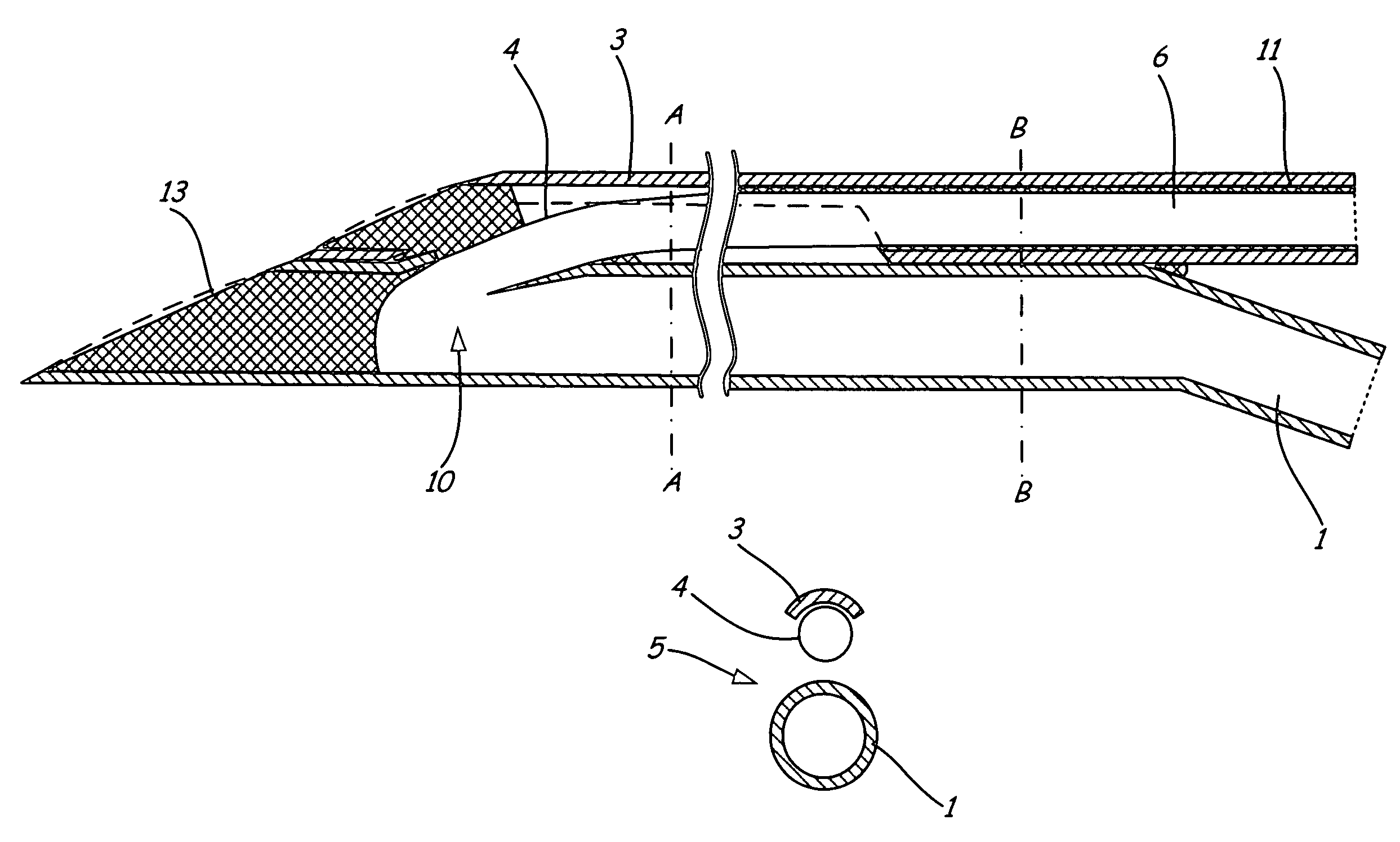Micro-dialysis probe
a micro-dialysis and probe technology, applied in the field of micro-dialysis probes, can solve the problems of delay in the adjustment of equilibrium, dead space in the shaft in which dialysate is drained, and insufficient flow through such dialysis probes, so as to promote concentration equalisation and increase flow rate
- Summary
- Abstract
- Description
- Claims
- Application Information
AI Technical Summary
Benefits of technology
Problems solved by technology
Method used
Image
Examples
first embodiment
[0028]FIG. 1 illustrates a micro-dialysis probe in accordance with the present invention. The micro-dialysis probe extends longitudinally between a proximal probe opening and a distal probe tip. A supply line 1, or a supply channel, is provided through which the drip-feed solution is introduced into the probe. A drainage line 6, formed by a hollow fiber 4, is provided for draining the drip-feed solution from the probe. A tube 11 may be provided surrounding the drainage line 6 for supporting the drainage line 6. The hollow fiber 4 is may be formed to be replaceable, and correspondingly sealed in, the tube 11. The supply line 1 and drainage line 6 are arranged substantially side-by-side and together form the probe shaft of the micro-dialysis probe. At the distal probe tip, the probe is sealed and pointed with a sealing material 13, to enable it to be introduced into subcutaneous tissue. In the vicinity of the probe tip, a dialysis opening 10 is provided in the supply line 10. The holl...
second embodiment
[0033]FIG. 4 illustrates a micro-dialysis probe of the present invention in accordance with a The flow channel for the drip-feed solution consists of a hollow fiber 8 with a supporting profile 2 inserted into it which separates the supply line 1 and the drainage line 6 from one another, the supporting profile 2 having at least one opening 7 in the area of flow inversion. The supply line 1 and drainage line 6, together with the hollow fiber 8, form a part of the outer wall of the probe, but are separated and supported such that the flow is not impeded. The supporting function and flow guidance are assumed by the profile 2. The supporting profile 2 is thus configured such that the volume of the hollow fiber 8 through which the flow may pass consists of a number of elongated hollow spaces. These hollow spaces enable the drip-feed solution to flow into the probe tip and to be re-circulated to the other side, wherein the flow is inverted by the overflow openings.
[0034]As shown in FIG. 4...
PUM
 Login to View More
Login to View More Abstract
Description
Claims
Application Information
 Login to View More
Login to View More - R&D
- Intellectual Property
- Life Sciences
- Materials
- Tech Scout
- Unparalleled Data Quality
- Higher Quality Content
- 60% Fewer Hallucinations
Browse by: Latest US Patents, China's latest patents, Technical Efficacy Thesaurus, Application Domain, Technology Topic, Popular Technical Reports.
© 2025 PatSnap. All rights reserved.Legal|Privacy policy|Modern Slavery Act Transparency Statement|Sitemap|About US| Contact US: help@patsnap.com



